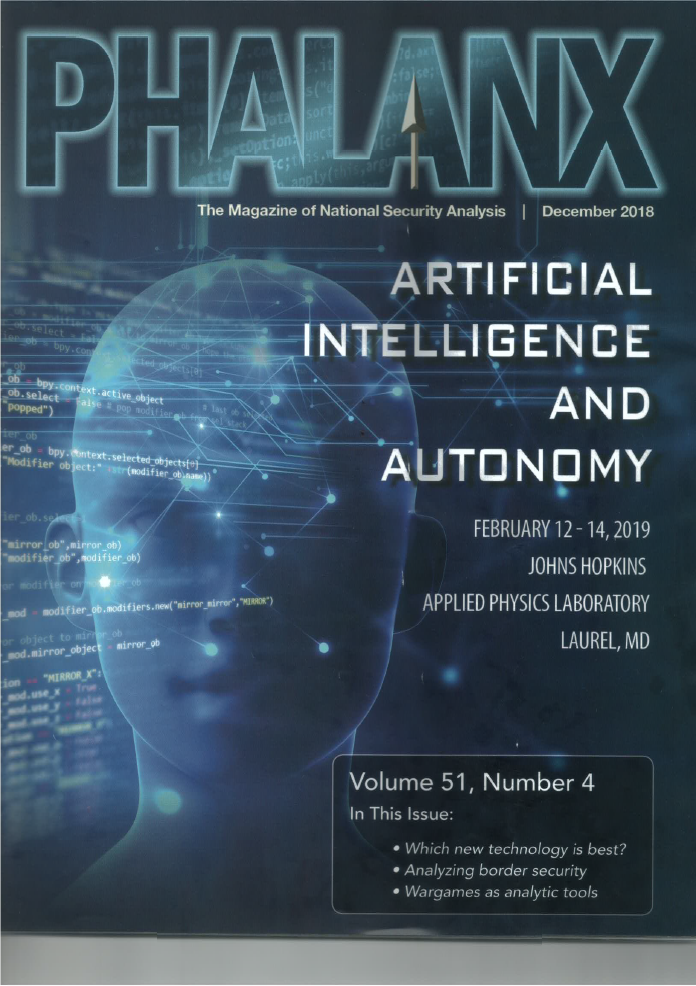 The Military Operations Research Society (MORS) publishes a periodical journal called the Phalanx. In the December 2018 issue was an article that referenced one of our blog posts. This took us by surprise. We only found out about thanks to one of the viewers of this blog. We are not members of MORS. The article is paywalled and cannot be easily accessed if you are not a member.
The Military Operations Research Society (MORS) publishes a periodical journal called the Phalanx. In the December 2018 issue was an article that referenced one of our blog posts. This took us by surprise. We only found out about thanks to one of the viewers of this blog. We are not members of MORS. The article is paywalled and cannot be easily accessed if you are not a member.
It is titled “Perspectives on Combat Modeling” (page 28) and is written by Jonathan K. Alt, U.S. Army TRADOC Analysis Center, Monterey, CA.; Christopher Morey, PhD, Training and Doctrine Command Analysis Center, Ft. Leavenworth, Kansas; and Larry Larimer, Training and Doctrine Command Analysis Center, White Sands, New Mexico. I am not familiar with any of these three gentlemen.
The blog post that appears to be generating this article is this one:
Simply by coincidence, Shawn Woodford recently re-posted this in January. It was originally published on 10 April 2017 and was written by Shawn.
The opening two sentences of the article in the Phalanx reads:
Periodically, within the Department of Defense (DoD) analytic community, questions will arise regarding the validity of the combat models and simulations used to support analysis. Many attempts (sic) to resurrect the argument that models, simulations, and wargames “are built on the thin foundation of empirical knowledge about the phenomenon of combat.” (Woodford, 2017).
It is nice to be acknowledged, although it this case, it appears that we are being acknowledged because they disagree with what we are saying.
Probably the word that gets my attention is “resurrect.” It is an interesting word, that implies that this is an old argument that has somehow or the other been put to bed. Granted it is an old argument. On the other hand, it has not been put to bed. If a problem has been identified and not corrected, then it is still a problem. Age has nothing to do with it.
On the other hand, maybe they are using the word “resurrect” because recent developments in modeling and validation have changed the environment significantly enough that these arguments no longer apply. If so, I would be interested in what those changes are. The last time I checked, the modeling and simulation industry was using many of the same models they had used for decades. In some cases, were going back to using simpler hex-games for their modeling and wargaming efforts. We have blogged a couple of times about these efforts. So, in the world of modeling, unless there have been earthshaking and universal changes made in the last five years that have completely revamped the landscape….then the decades old problems still apply to the decades old models and simulations.
More to come (this is the first of at least 7 posts on this subject).

A good statement of the problem. Data Quality is a fundamental issue in Data Science and AI. It needs to be brought out, and rectified examined before professional war-gaming can advance.